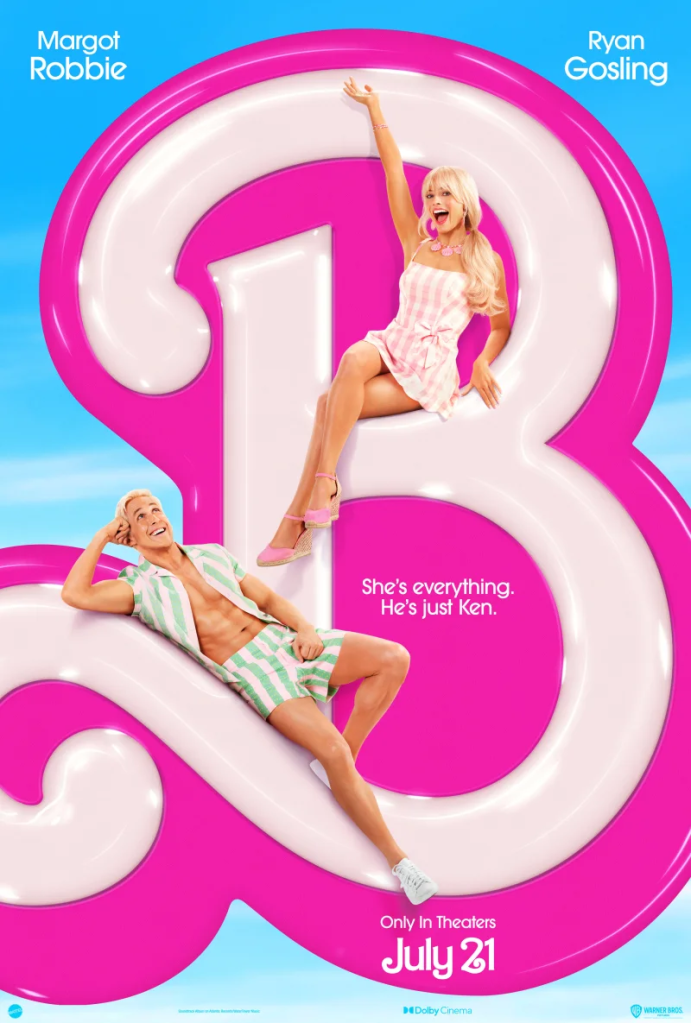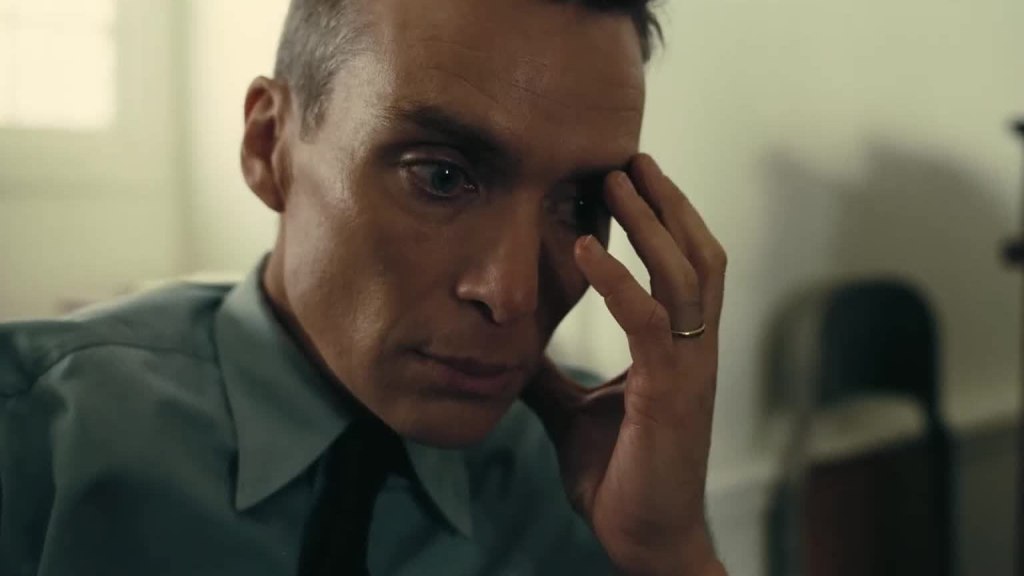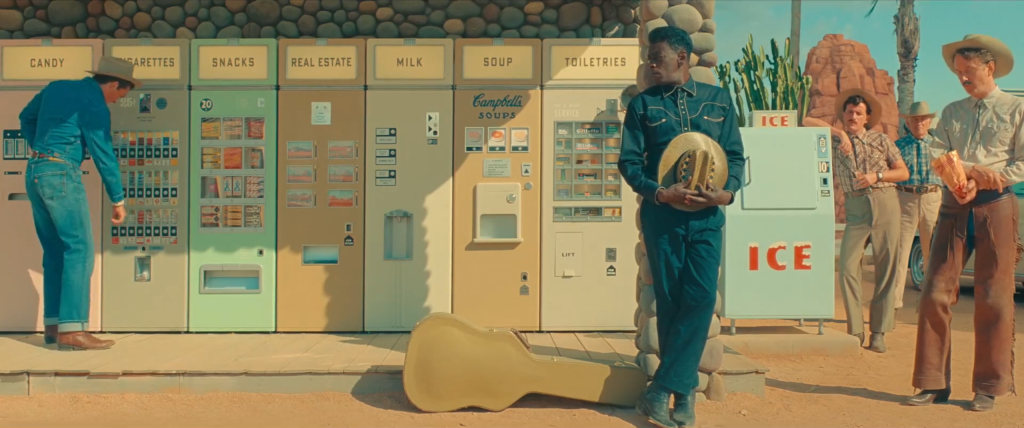
This review originally appeared as a guest post on 10 Years Ago: Films in Retrospective, a film site in which editor Marcus Gorman and various contributors revisit a movie on the week of its tenth anniversary. This retro review will be a bit more free-form, recappy, and profanity-laden than usual.
“You stood by my side all these years while I reaped the benefits of destruction. And now that I’m trying to protect the people that I put in harm’s way, you’re going to walk out? I shouldn’t be alive, unless it was for a reason. I’m not crazy, Pepper. I just finally know what I have to do. And I know in my heart that it’s right.”
There’s no billionaire coming to save you. Now or ever. Typically, these 10YA reviews would kick off with some sort of reflection on how I saw the film originally (studying in Moscow!), what it has meant to me over the years (I’ve rewatched it a few times!), a few things that have happened since (a whole cinematic universe! also I got married and had a kid and stuff), but if I’m being perfectly honest, this one observation is the biggest change I’ve made in the past decade, and the one that was rattling uncontrollably through my mind as I rewatched Iron Man for the first time in at least 6 years. I still get the appeal. The origin story, and the joys of discovering a new superhero that I had only passing familiarity with from occasional animated TV jaunts. But this guy? Tony Stark (Robert Downey, Jr)? A trust-fund kid who inherited his way into the military-industrial complex? I don’t think so. Bruce Wayne also strains credulity for me now, and at least his non-specific multinational business-company (maybe the same one Christian Grey is in charge of?) wasn’t actively in the business of killing non-descript people in faraway lands for nebulous reasons. This review won’t be some navel-gazing nonsense about how superheroes are 21st-century neoliberal philosopher kings (or whatever the hell Keith Spencer was trying to say in Salon last week), but it will come with a healthy dose of acquired thirty-something cynicism of the populist bonafides of shitkicking billionaires. Billionaires can do good things, or cool things, or kinda sorta but not really try to do both. But most billionaires don’t have much of a public profile, and most of the ones who do are high-functioning sociopaths like Peter Thiel. None of these people are superheroes, or have any desire to be. They’ve just amassed ungodly sums of money.
So I can’t really speak insightfully about the head of a corporation suddenly having a transformative experience in a cave in Afghanistan, being blown to hell and ultimately remixing a bunch of his own weapons into the means to exact immediate, fiery revenge against his captors. Or growing a conscience and deciding to shut down his company’s main profit center. Billionaires might be tax-deductible dilettantes for one charitable cause or another, but their most reliable motivator is staying rich and getting richer, and every other action they take is appropriately viewed through that lens. The only person in this film who briefly speaks the truth about the world of 2008 is that grotesque financial clown Jim Cramer, who says of Stark Industries, “I’ve got one recommendation! Ready? Ready? Sell, sell, sell!” Any CEO of a publicly-traded company that followed Stark’s lead would be immediately sued and fired, which is why none of them ever would, unless there were some underlying financial incentive. And war is as good for business as ever.
But that’s enough of that. Tony Stark is still a stellar work of fiction, even if he comes from a quaint milieu in American history. The year after the Cuban Missile Crisis, the year in which Superman tapped President John F. Kennedy to impersonate Clark Kent in order to safeguard his secret identity, because – in the words of the Man of Steel, “If I can’t trust the President of the United States, who can I trust?” Pretty. Fucking. Quaint. So instead of enjoying Stark as a hyperrealistic scion of comic heroism into a world that is recognizably our own (that would occur a few months later), I’ll simply enjoy him as the work of high fantasy that he would ultimately become. And for anyone determined to read an Infinity War spoiler into that comment, rest assured I’ll be leaving the latest Marvel film unspoiled here. No promises on the rest.

Iron Man‘s villain, Obadiah Stane/Iron Monger (Jeff Bridges) is…frankly one of the MCU’s silliest. He starts out suing and sidelining Stark as I suggested above (all the while pretending to be his friend and mentor), but that turned out to be Step 2 of a plan that began with him being the instigator of Stark’s cavebound kidnapping in Afghanistan. The kidnappers are known as The Ten Rings, a militant group whose name I completely missed in every previous viewing of this film. They’re a sort of transnational, multilingual mishmash of generically-motivated violence. They want Stark’s weapons in order to “rule these lands”. The look and feel of these guys is pure Taliban, but the movie takes care to have a couple of them speak Hungarian and leave their ideology nice and vague. They keep Tony alive because Stane apparently “paid [them] trinkets to kill a prince”. But Stane was having Tony killed in the first place because he got too close to realizing that Stane was…selling weapons to the Ten Rings in the first place? So they keep him alive in order to have him build more weapons. This is a web of mutually contradictory relationships and motivations that makes about as much sense as the season arc of Marvel’s The Defenders, but in such a fun, feature-length wrapper, I hardly mind. Bridges’ delightful performance culminates with him barking at a scientist for failing to perfect a chest-mounted compact fusion reactor, when “Tony Stark was able to build this in a cave! With a box of scraps!” That is not only one of the best lines in the film; it’s the primary thrust of this film’s appeal: Watching whatever this genius tinkerer can weld together next, in parallel to the selfish playboy figuring out how to become a superhero.
At his side is Jarvis (Paul Bettany), an A.I. voice with a jaunty British accent that is at least partially responsible for the modern glut of dubiously useful digital assistants, who is first introduced reading and window-projecting some “Good morning!” content for Vanity Fair reporter Christine (Leslie Bibb), as she emerges from Stark’s bed following a one-night stand. I won’t speak to how silly this moment seems (although real-life VF writer Joanna Robinson has a thing or two to say about it) – in a movie whose opening scene includes a soldier quizzing Stark about whether he “went 12 for 12 with last year’s Maxim cover models” (before posing for a handheld camera selfie which Stark warns him not to post on his MySpace page), it’s fair to say this film is a bit dated when it comes to both technology and sexual politics. But I already spent a somber paragraph of my Gone Baby Gone retrospective discussing that. And Jarvis is here! This burgeoning artificial lifeform is already too intelligent to be reading the weather and headlines, serving as essentially both the design assistant and automated factory behind all of Stark’s Iron Man suits. But don’t fret, Jarvis. You have no idea what’s ahead of you. Getting a body, wearing a cape, merging with an Infinity Stone, phasing through walls, having a sexual relationship with a human woman who looks half your age, but is canonically 2.5x older… Real marvels. Just you wait.
Thinking back on all of the superhero girlfriends at work in the MCU, Pepper Potts (Gwyneth Paltrow) has about as little to do as Jane Foster (Natalie Portman), and I’m a little unsure why I like one character but not the other. Perhaps it’s because Portman’s last appearance saw her relegated to being a container prop for an Infinity Stone, literally hoisted from scene to scene, but I think it’s also because she and Thor never felt like a real relationship. In a series which asks me (semi-successfully) to invest emotionally in a romance between Scarlet Witch and Vision, this is an appropriately damning criticism. Pepper is a bit player (even though she eventually gets yet-to-be-remarked-upon lava monster powers), but throughout the entire series, she has always felt like she was reacting to Stark’s selfish recklessness by giving as well as she got, and steadily increasing her personal and professional power in the process. She can shit-talk right back at Stark’s level, but also becomes the CEO of his company. And that’s not because she’s eventually sleeping with him, but because she’s the best person for the job and he knows it. Nonetheless, the film still has the good sense to give them a rooftop moment in which they’re sorting out what a weird moment they just had, dancing at a party in front of all of their colleagues, she in an open-backed dress that Stark apparently paid for (as a birthday gift that she bought for herself and expensed). It’s almost a similar beat to Spider-Man: Homecoming at its titular dance, when Peter Parker (Tom Holland) has to ditch his date to preserve his secret identity and fight the baddies. It’s a very high school moment involving a pair of adults who should know better. It teases the well-trod idea that being a superhero is hard on the ones you love, but in a way that feels fresh and has time to breathe. Colonel Rhodes (Terrance Howard, and then Don Cheadle) gets a few moments like this as well, trying desperately to explain to Tony just how his actions affect other people. The later MCU films had fewer moments like this – they just don’t have time for them. But Pepper and Tony’s romance, while a bit of a mess, is one I’ve consistently enjoyed.

Previous readers of my 10YA reviews will note this one is a bit shorter, since I didn’t opt for a scene-by-scene recap this time. There’s a very specific reason for this – the superhero action, while enjoyable, feels a bit mundane now. It’s not to say the Iron Man/Iron Monger boss fight wasn’t fun though. I have a longstanding bias against CGI-heavy fight scenes taking place at night, and this is actually one of the best examples of such a fight. From Iron Monger’s glowing reactor appearing in the dark, to the two grappling and firing weapons at each other over a shimmering arc reactor, director Jon Favreau and cinematographer Matthew Libatique (who would go on to do some visually stunning work for Darren Aronofsky) never use darkness as a crutch here, and the whole (pretty lengthy) fight is well designed. The musical score (by no less a talent than Game of Thrones maestro Ramin Djawadi) is great fun, and features a hard-hitting theme that would go on to be expanded and reused in Pacific Rim. More broadly, this fight feels like the start of a transition between the look and feel of the early-2000s Spider-Man films (which used CGI, but also made heavy and noticeable use of wires and large-scale setpieces) and the glossier, more CGI-heavy fighting style that would come to define the MCU. Viewing the film in this way, if Iron Man had flopped, it’s hard to imagine the MCU would’ve become the unstoppable juggernaut it is today – and it’s equally possible that this transition never would’ve completed, and Marvel (or whatever collection of studios kept making Marvel films) would’ve kept churning out superhero stories that kept one foot firmly grounded in dubious attempts at hyperrealism. Or as @FearsomeCritter put it on Twitter yesterday:
If there’s one thing the last decade of hit-or-miss Marvel films has taught me, it’s that as a studio, Marvel is quite confident in how it wants to handle these characters. And for one of its earliest, boldest attempts to plunge into that universe, Iron Man holds up. That the character is almost unrecognizable (and unlike kindred spirit Bruce Wayne, commits a staggering number of murders!) is a testament to a slew of writers and directors’ transformation of this character, as well as Downey Jr’s performance. Tony Stark drifts from one catastrophe and triumph to another, and spits at Steve Rogers in The Avengers, “We are not soldiers.” Stark is no soldier, but he is in an endless fight of his own making, and he’s the sine qua non of Marvel’s success. And he still inspires me, even if as a concept, he makes about as much sense to me as a Norse god these days.
FilmWonk rating: 7.5 out of 10

















